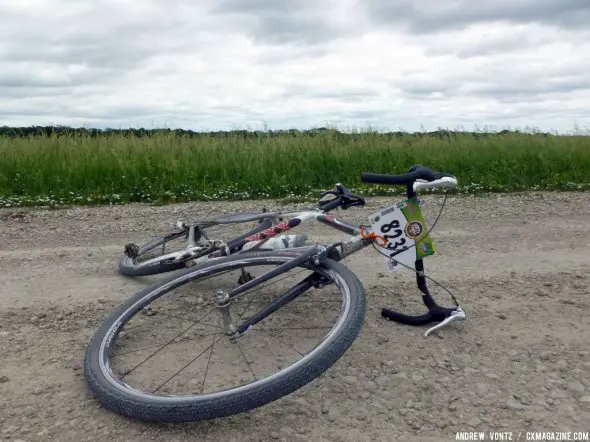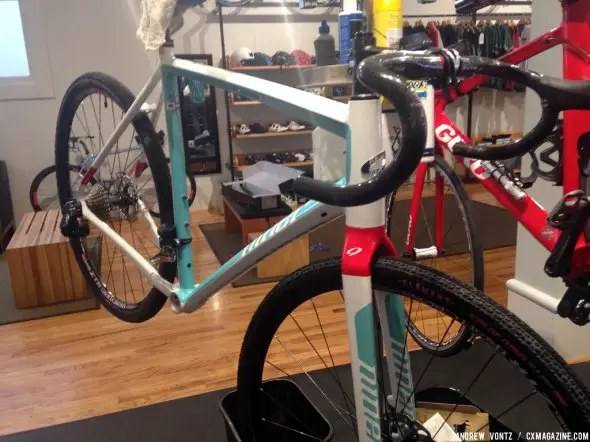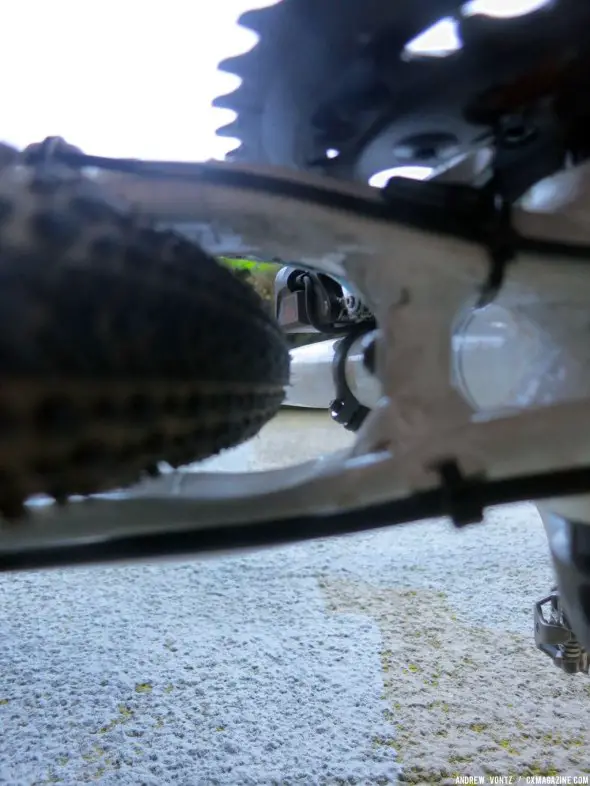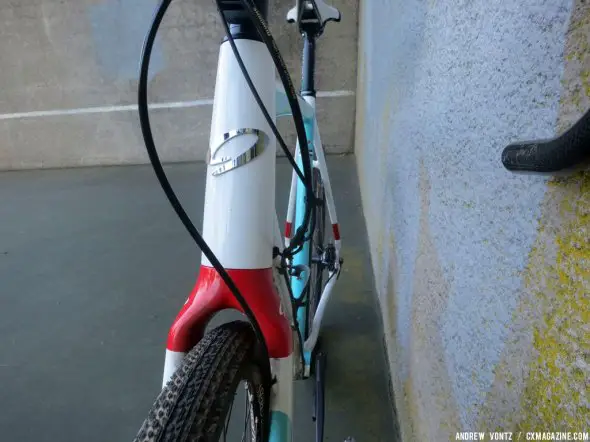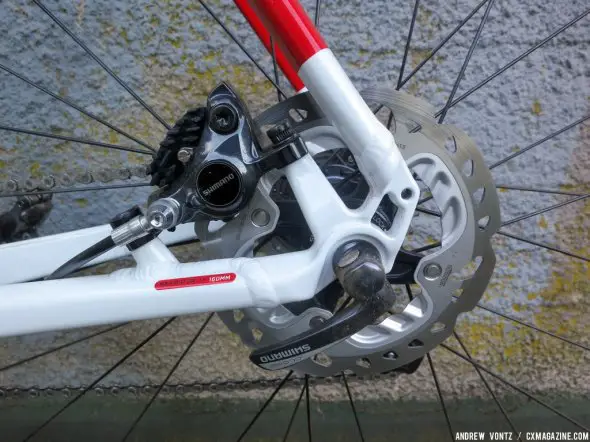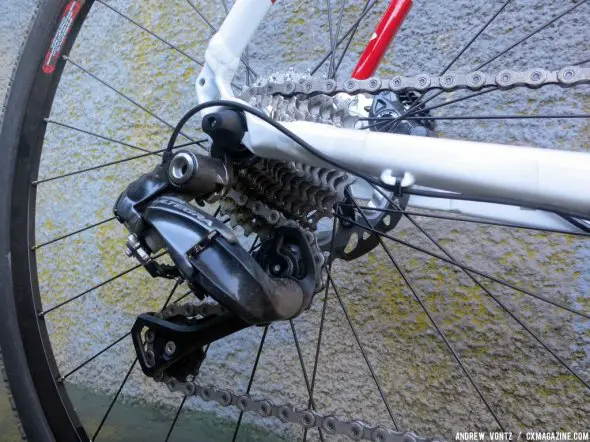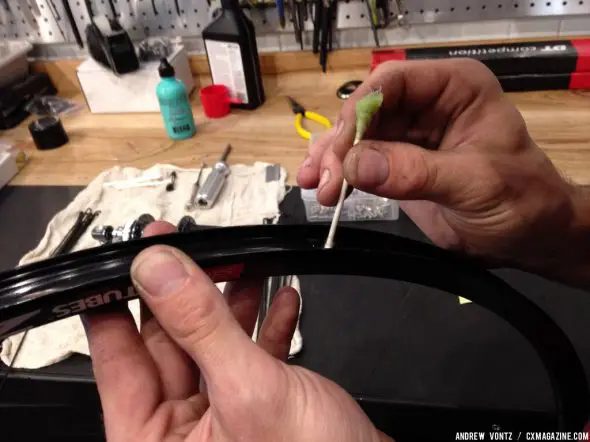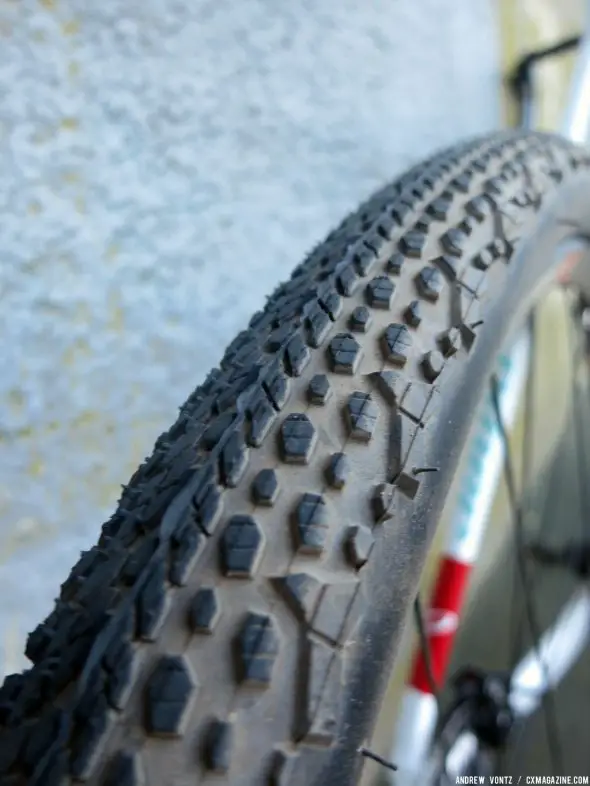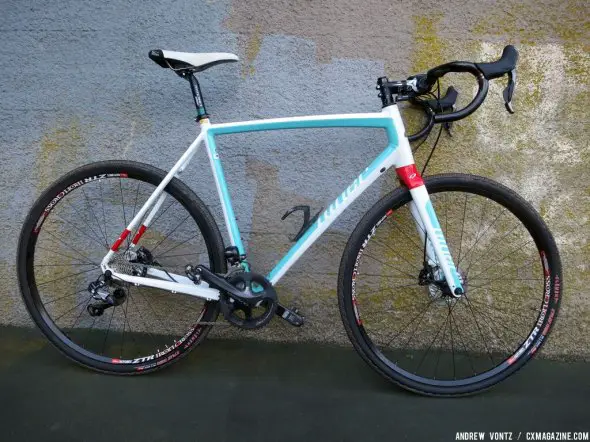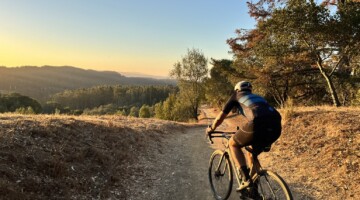Andrew Vontz is our new gravel-grinder addict and contributing writer, and is prepping for Dirty Kanza Half Pint glory. Today, he’s showing us what exactly went into the making of his ride for this year’s 109-mile version of the Dirty Kanza gravel race in Kansas. As Vontz well knows, many cyclocross bikes make great gravel bikes, but if you have the opportunity to build something event-specific, you’ll count your blessings and jump on the opportunity. Here’s his gear adventure:
Sorting out my kit for this year’s Dirty Kanza Half Pint has been an odyssey born of necessity from an incident in a cyclocross race last fall. Trying to carry speed into a downhill left-hand turn over loose gravel at a Bay Area Super Prestige race at Candlestick Park turned out not to be the winning strategy I thought it would be. Instead, I managed to both crash and rip a water bottle cage bolt up through my down tube, thereby cracking the frame and turning it into an expensive, and over-sized, aluminum paperweight. End result: cracked frame. Bike death. An inglorious eighth-place finish in my Master class field.
I rode the balance of the season on borrowed bikes while beginning a parallel search for my ultimate gravel bike and accompanying gear for the 2014 Dirty Kanza Half Pint. Here’s a brief overview of where my gravel dreams took me and why.
From the start, I knew the basic parameters of what I thought would be a solid gravel bike and with the help of Bespoke Cycles, a bike shop in San Francisco that specializes in custom builds, I put together a Niner RLT9 build that I hope will be the perfect vehicle for tackling the Half Pint. [Ed. Note: We first saw the Niner bike at Interbike last year, and they admitted that it was focused for the gravel crowd, though you could race ’cross on it.]
FRAME
Any frame I picked needed good tire clearance—no different than what a cyclocrosser in the Northwest needs. High-volume 700 x 40 tires with minimal tread seem to be the best bet for the long, rough gravel events. They roll relatively fast and smooth and help reduce the risk of pinch flats versus narrow ’cross-style rubber.
A great gravel frame has ample clearance for big rubber and mud that might accumulate in wet conditions. Disc brake compatibility allows you to have brakes that work in wet and muddy conditions and also to keep trucking in the likely event you nail a pothole or other road junk while pacelining down a gravel road.
The ideal gravel frame also has American-style ’cross geometry with a lower bottom bracket height to keep your center of gravity lower for greater stability and a ride more like a road bike. Gravel grinders are on mixed terrain and lots of loose gravel, but at events like the Dirty Kanza and Dirty Kanza Half Pint you’ll spend a lot of time going in a straight line and drafting or pacelining, so you want a frame that feels stable.
While the industry is catching up to the demand for gravel bikes, they’re a few seasons off from nailing the supply side. High demand and low inventory make it very challenging to source a gravel frame or a ’cross frame appropriate for gravel racing in the offseason. After an extensive search, I landed on a Niner RLT9 that had encompassed all of the aforementioned features I feel a great gravel frame should have.
DRIVETRAIN AND BRAKES
I ran rim brakes at the 2013 Half Pint, but after getting to try hydraulic disc brakes last ’cross season, I felt they’d be optimal for gravel racing. They can be finicky and they’re not as easy to setup and maintain as rim brakes, but they also keep working without rim rub in severe conditions or if your wheel goes way out of true. If you blow a hydraulic line in the middle of a self-supported race like the Half Pint, you’re screwed, but that’s a relatively low probability event. [Ed. note: Bring extra brake pads if you’re expecting mud or moisture.]
During a farm road race earlier in the year, clay-like mud decimated my mechanical drivetrain and made it almost impossible to shift. Luckily, I found a mud puddle and pulled enough gunk off to keep riding, but one of my buddies wasn’t so lucky and ended up ripping his rear derailleur off.
Electronic shifting doesn’t go out of adjustment and shifts perfectly every time. That’s the promise at least. And it’s a promise that put it at the top of my gravel drivetrain wishlist. [Ed. Note: Just make sure it’s charged before embarking on a long adventure! At Paris to Ancaster, we saw a few dead batteries that meant people were stuck in one gear for most of the race.]
The Shimano R785 groupset is the only groupset that combines electronic shifting and hydraulic disc brakes, so it was the choice for my ultimate gravel build.
WHEELS AND RUBBER
I ran tubes with 700 x 40 Clement Xplor MSO tires at the Half Pint in 2013 at a stiff 63 psi. I didn’t get any flats, but in the year since the event, I’ve done a lot of research and read about a lot of riders going tubeless for gravel. The idea of lower rolling resistance and a more comfortable ride definitely appealed to me so Bespoke built a wheelset with Stan’s NoTubes Iron Cross tubeless rims on Shimano R785 Centerlock hubs with Shimano’s heat-dissipating Ice-Tech 140mm rotors. I’m 6′2″ and 190 pounds, so Bespoke used a three-cross pattern on the wheels.
Initial experiments with setting up the MSOs tubeless have had mixed results [consistent with Cyclocross Magazine’s tubeless experiments with Clement tires]. The MSO is not a tubeless tire and it doesn’t fit as tight on the Iron Cross rims as I’d like [Subscribe to Issue 25 for all of the secrets to running tubeless for ’cross]. I also have to fly two days before the race, so I’m going to perform further testing before definitively committing to tubeless. Starting with this Going Tubeless for Cyclocross series is a good guide.
WATTS UP
In order to gather data so I can better focus my training for all future gravel races, I wanted the ability to measure power on my gravel rig during the Half Pint. The Stages power meter represented an extremely simple and relatively affordable solution that’s disc brake compatible. Now I can capture data at the Half Pint and on training rides so that in the future I can do more of my training for gravel races on this bike instead of on my road bike. [Stay tuned for Cyclocross Magazine’s full review on a Stages power meter.]
SUSPENSION?
When I read about Ergon’s CF-3 seatpost, it seemed tailor-made for gravel racing—just a touch of suspension that doesn’t impact your position on the bike and helps smooth out the many bumps in the road. I sourced a CF-3 but unfortunately for me, the Niner RLT9 seat tube proved to be one centimeter too long for me to be able to use the CF-3. Super bummer, but it will go onto my singlespeed cyclocross bike in the meantime. [Ed. Note: Subscribe to Issue 25 for our test of the Ergon CF-3 and other suspension posts for ’cross.]
Ultimately, it took months to piece everything together for the build and Bespoke did an excellent job of getting everything sorted out. Soon, the new bike will face its most dangerous test yet: it has to survive a Southwest Airlines flight to Kansas City, MO, and a three-hour drive to Emporia, KS, to get to the start of the Half Pint. Last year, I discovered a bent spoke the night before the race at 1 a.m., a spoke that would break five miles into my first ride after finishing the race. I hope not to repeat that experience.
In my next column, I’ll let you know how everything worked at the Half Pint and take a thrilling look at power data I gather at the race.
Can’t get enough gravel? Check out our Issue 20 spread on gravel bikes.
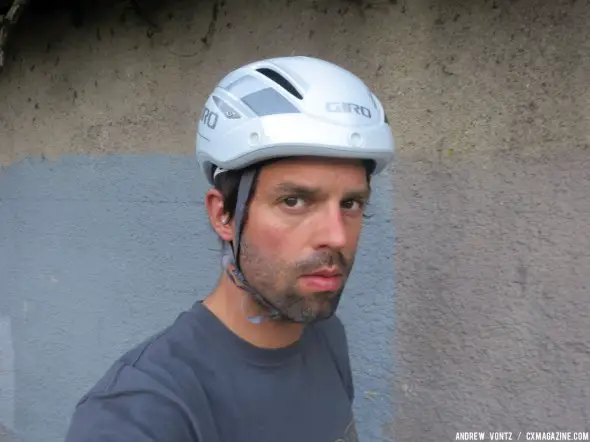
Race ready and going a little aero for the Kansas wind with the Giro Air Attack helmet. © Andrew Vontz
Thanks to Bespoke Cycles for help with this build. Check them out here.













